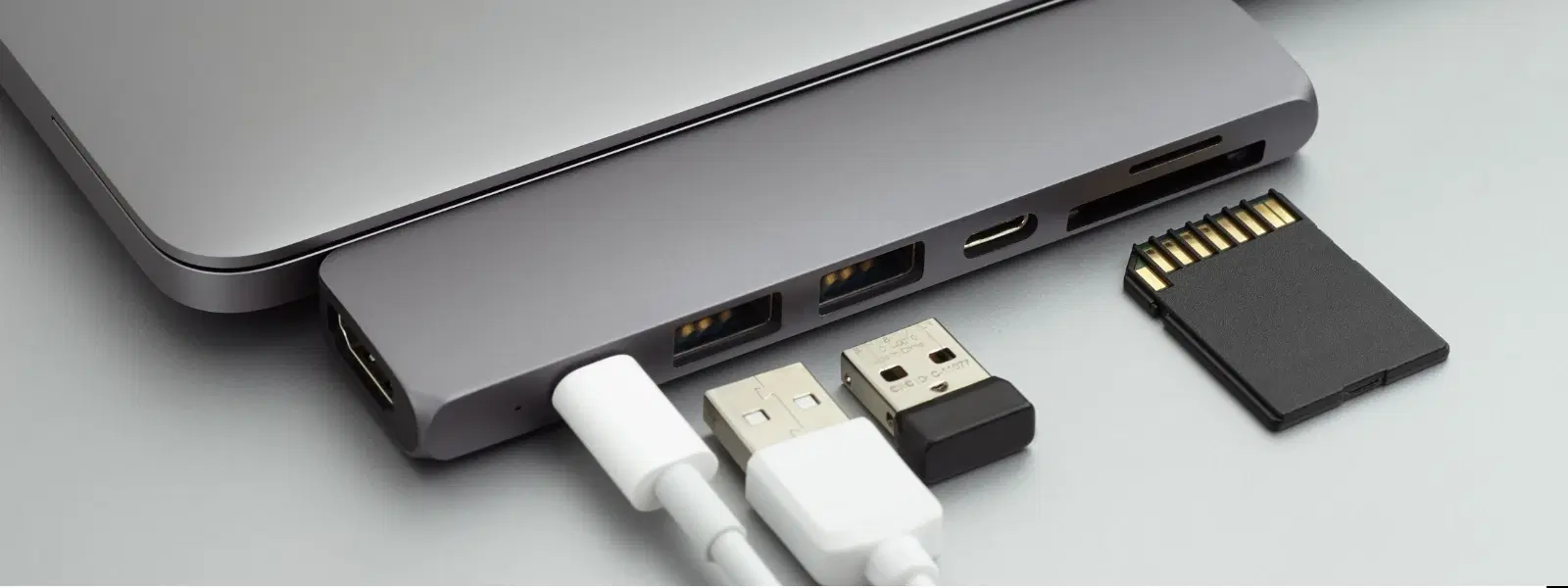
Consumer Electronics
•03 min read
USB ports connect us to a world of data and device interactions, yet in secure environments, managing their access can be challenging. For those using Symantec Endpoint Protection, restrictions on USB ports can seem daunting, but with the right guidance, you can configure these settings safely and effectively. At Tata Neu, not only do you secure your device, but you also earn NeuCoins that enhance your shopping experience with exclusive benefits.
USB devices often pose risks like the inadvertent transfer of malware or unauthorised data extraction. Symantec Endpoint Protection defaults to a cautious stance by blocking USB ports to safeguard your system. This approach minimises potential vulnerabilities, ensuring that only trusted devices gain access.
With Symantec's Application and Device Control features, you can manage USB device interactions without sacrificing productivity. The software allows detailed management of permissions so that while you restrict dangerous devices, validated ones continue to function seamlessly, preserving your workflow and data integrity.
Begin by logging into the Symantec Endpoint Protection Manager console. Ensure you have the necessary admin permissions to make changes. Once in, navigate through the settings to locate the USB management section. This is where adjustments can be made to create a secure yet flexible USB access environment. Whether you are using Windows 10 or macOS, the process of configuring USB access in Symantec Endpoint Protection follows similar principles.
Before modifying access controls, it is vital to identify the devices you intend to allow. Use the Device Viewer to locate the details such as Device ID and Class ID. This information verifies the authenticity of connected devices and helps in constructing a trusted devices list.
To enable USB ports, create or modify the existing Application and Device Control policies. This process involves specifying which USB devices are permitted. Input the verified Device IDs to authorise only trusted devices, ensuring your security remains uncompromised while still offering the flexibility needed for daily operations.
If the software has blocked certain USB ports, the remedy lies in disabling these specific restrictions. Expert configuration allows for exceptions, so trusted devices can bypass the default block. This approach safeguards system integrity while enabling essential functionality. We understand that managing device security can be challenging, but these simple steps can help you maintain both safety and productivity.
Did You Know? Symantec Endpoint Protection Offers Granular USB Control
USB restrictions can be customised to allow select devices and block others, striking a balance between security and productivity. Effective management using Application and Device Control policies ensures you benefit from robust protection without unnecessary delays.
Dive deeper into managing USB access by fine-tuning permissions for different user groups. Symantec Endpoint Protection provides a detailed view of device control settings, which assists in adjusting policies to align with various operational requirements. This ongoing management is key to maintaining a secure environment while allowing flexibility.
Should you encounter errors like the notorious "USB port blocked by Symantec Endpoint Protection", start by checking the Device IDs and configuration logs. Detailed reports within the console can aid in diagnosing mismatches or errors. Regular monitoring and log reviews not only help in addressing current problems but also in preempting future issues.
Crafting robust USB access policies is essential for maintaining security. Regular policy reviews and updates ensure that your device management strategy evolves alongside emerging security threats. Trust in the process and keep your software configurations aligned with organisational goals.
Utilise the reporting tools within Symantec Endpoint Protection to track USB usage. Monitoring device activity can flag unusual patterns early, allowing you to take proactive steps before threats materialise. This commitment to vigilance reinforces both security and productivity.
Navigate to the Application and Device Control settings in the Symantec Endpoint Protection Manager and create a policy that permits specific USB devices by identifying their unique device ID.
It is not recommended to make registry changes for managing USB ports. Instead, use the Device Control feature provided in the Symantec Manager for a secure and managed approach to USB access.
Identify the particular USB device within the Symantec Manager console, modify the relevant Application and Device Control policy to allow access, and verify that the device is authorised.
To add a device ID, use the Device Viewer in the Symantec Endpoint Protection Manager console to retrieve the necessary details. Then, include the device ID in your Application and Device Control policy to authorise access.
By following these detailed steps, you now have the knowledge to enable USB ports in Symantec Endpoint Protection whilst preserving a high standard of security. Configuring these settings thoughtfully ensures that both your data and devices remain protected. Embrace the ease of controlled access and take confidence in the robust security infrastructure provided by Symantec Endpoint Protection. Tata Neu’s commitment to seamless and reliable service complements these safeguards, offering expert guidance and exclusive benefits, such as express delivery in select locations.